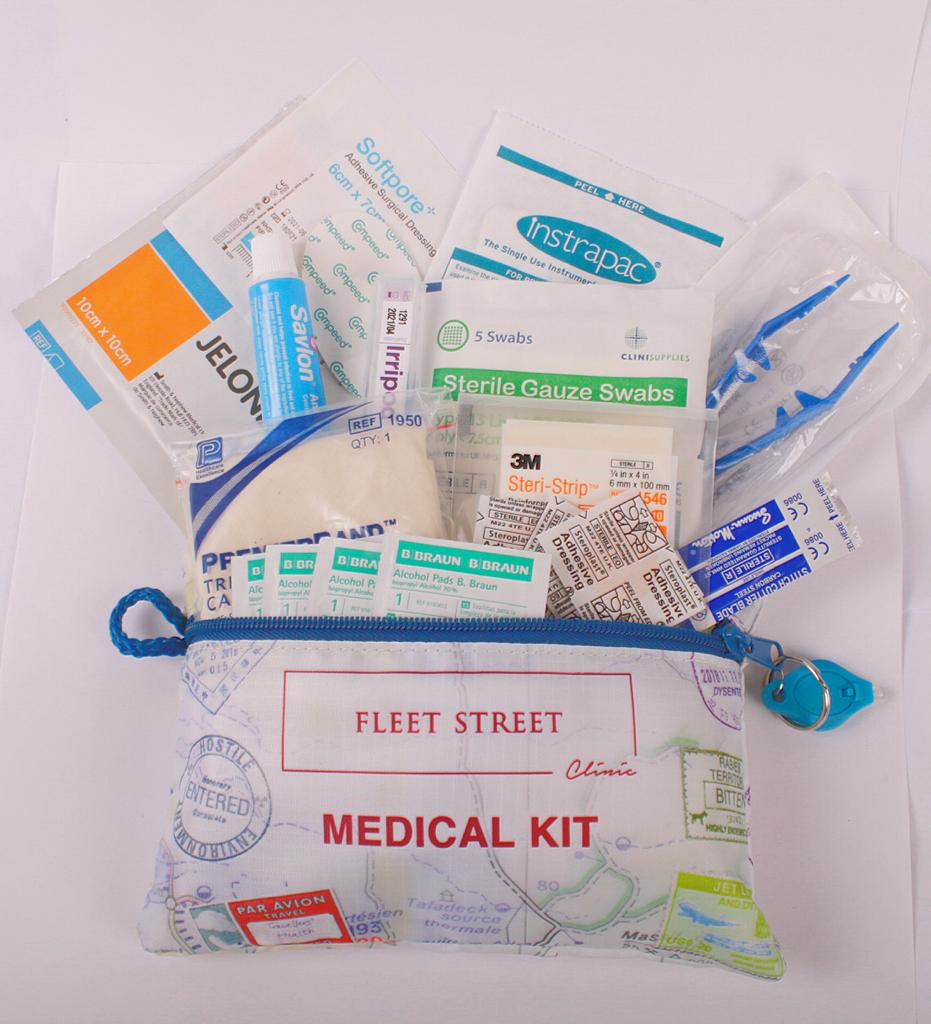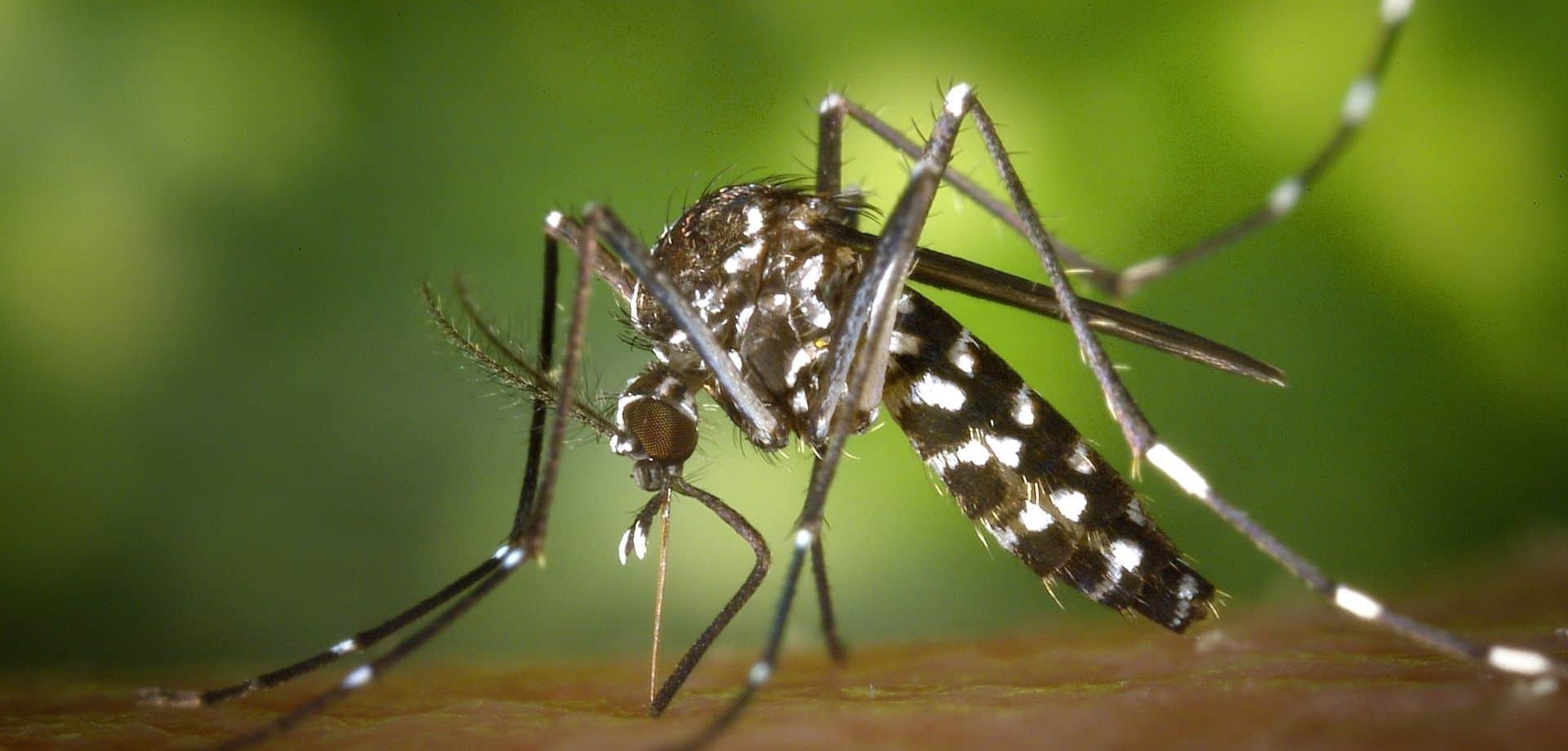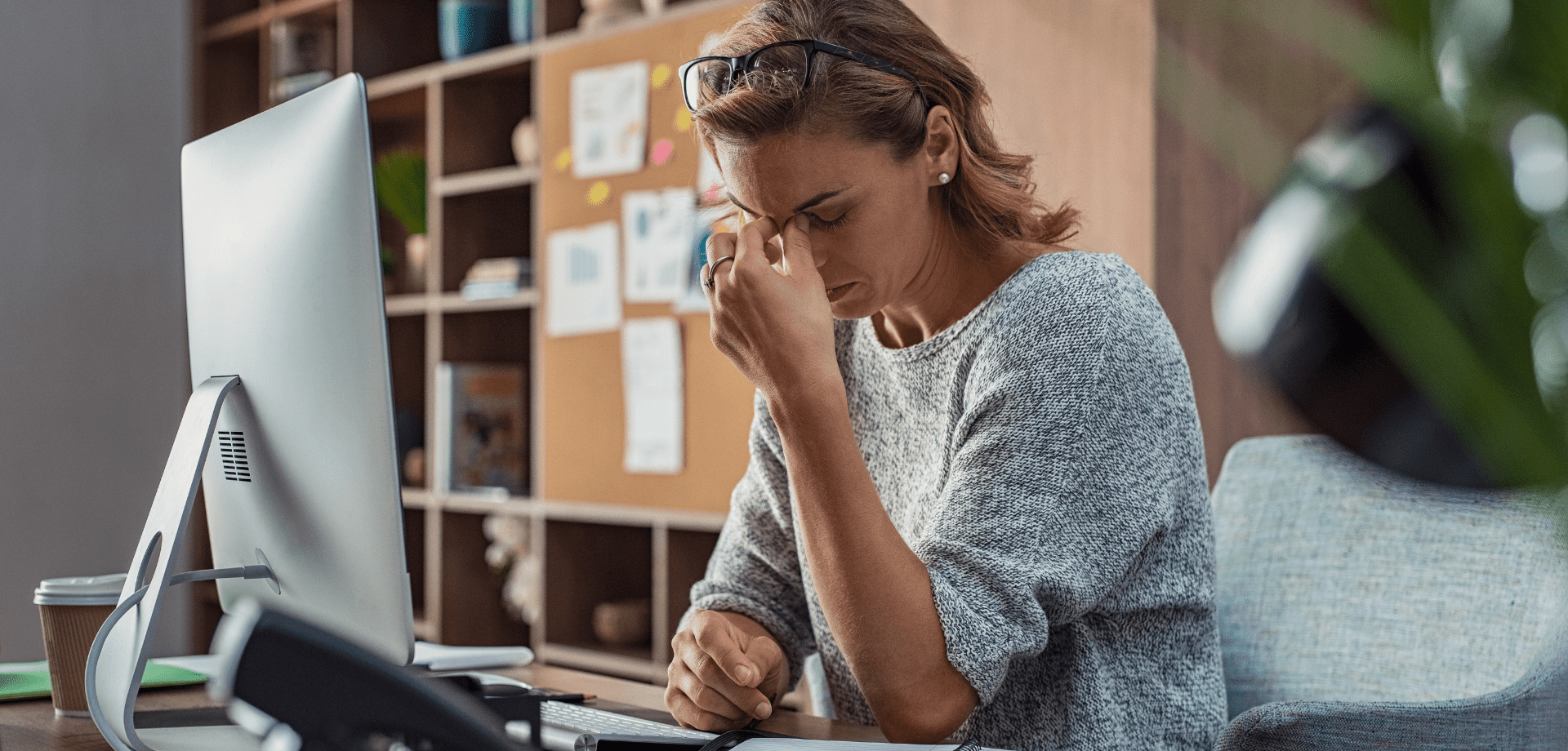Author: Tanu Singh
Respiratory Syncytial Virus (RSV) is a common and highly contagious virus that primarily affects the respiratory tract, causing significant illness, particularly in infants.
As it is seasonal, it usually peaks during the winter months and spreads through droplets from coughs and sneezes, or via contact with contaminated surfaces. RSV is a virus, so antibiotics are not an effective treatment.
Each year, RSV poses a substantial health risk to infants and older adults worldwide.
In the UK, RSV accounts for approximately 33,500 hospitalisations annually in children aged 5 and under, resulting in 20 to 30 deaths per year. 75-80% of hospitalisations due to RSV happened during the first 6 months of life.
Is there a suitable RSV vaccine for pregnant woman?
Abrysvo is a recombinant vaccine for the prevention of severe lower respiratory tract disease caused by RSV in infants up to six months old. It is the only maternal RSV immunisation given to the pregnant woman between 32 – 36 weeks of pregnancy to help protect newborns. It can also be used for older adults over the age of 60 years, in preventing RSV that can lead to breathing difficulties.
Maternal vaccination involves administering vaccines to pregnant women to protect their newborns through the transfer of antibodies. This approach has been effectively used for diseases like whooping cough. Vaccinating pregnant women against RSV provides passive immunity to their babies, safeguarding them against RSV until they can receive their own vaccines. The RSV vaccine must be given at least 2 weeks apart from the whooping cough vaccine.
The Joint Committee on Vaccination and Immunisation (JCVI) has assessed the impact of RSV and recommended implementing immunisation programs to protect vulnerable groups, including infants and older adults. Although the specific details and timeline are still being finalised, the program aims to reduce the incidence of RSV-related illnesses among infants, ultimately reducing RSV-related morbidity.
At Fleet Street Clinic, we can offer private RSV vaccination to protect you and your baby, ahead of the NHS roll out.
Abrysvo is an inactivated vaccine and only requires a single dose for protection.
RELATED SERVICES AVAILABLE AT FLEET ST. CLINIC
As the threat from the disease grows, here is everything the modern traveller needs to know about malaria.
What is malaria?
Malaria is an infection caused by a tiny, blood-borne parasite, transmitted by the bites of infected female Anopheles mosquitoes. Symptoms can often be delayed until sometime after exposure (a minimum of seven days but often four weeks or much longer), meaning the connection with travel may be forgotten, delaying diagnosis.
Returning from a tropical holiday should come with a suntan and sense of relaxation – not a tropical disease. However, the number of British travellers catching malaria abroad is rising, and scientists are warning it could get worse.
The UK Health Security Agency (UKHSA) has just published its latest data on malaria in travellers returning to the UK, and the numbers are troubling. Over 2,000 cases were reported in 2023, the highest total in over two decades. Globally, the number of cases of malaria has risen by 16 million, compared with pre-pandemic levels.
No less worrying is the potential impact of climate change. Warmer temperatures can extend malaria transmission season, as well as extend the disease’s geographical range to higher altitudes and cooler places where transmission was previously uncommon. Flooding and extreme weather events create perfect conditions for mosquitoes to thrive, resulting in outbreaks of the disease.
In tropical countries where malaria is widely prevalent, the disease takes a huge toll. In 2022, there were 249 million cases, 94 per cent of which were in Africa. These led to at least 608,000 deaths, mostly in children.
But research recently presented at the European Society of Clinical Microbiology and Infectious Diseases (ESCMID) Global Congress in Spain suggested that if the world’s carbon emissions and population growth remain on the current trajectory, the populations at risk of malaria and other mosquito-borne diseases could increase by an additional 4.7 billion people by 2100, relative to 1970-1999.
Diagnosing malaria depends on knowing that a person has been in a destination with a risk of the disease, since early symptoms can be non-specific, and malaria has a remarkable ability to be mistaken for other conditions.
The most common symptoms of malaria:
- Fever, usually above 38C and often intermittent
- Fatigue
- Aching muscles and joints
- Headache
- Chills (often with sweating and shivering)
- Abdominal pains and diarrhoea
- Sometimes jaundice (yellowing of the skin and whites of eyes)
Severe malaria can result in headache, fits and even death. Suspected malaria is therefore a medical emergency, and prompt treatment is effective and lifesaving.
The bottom line
If you develop a fever or become unwell on returning home from travelling abroad, seek medical advice promptly and make sure you doctor know that you have been away.
What areas have risks of malaria?
Risk areas for malaria include many parts of Africa, Asia, Central and South America, the Caribbean and Oceania – including holiday destinations in parts of Thailand, India and Peru.
How to prevent malaria on your travels
Medical prevention
Four to six weeks before your holiday begins, book a travel consultation regarding antimalarials – a travel nurse can advise on where and whether they are needed, and the options likely to suit you best.
Malarone and doxycycline are the two most-commonly prescribed medications, usually tablets or capsules taken once a day. They need to be commenced before travel, taken while you are away and continued on your return home.
For now, there are no suitable malaria vaccines for travellers. However, promisingly, two important vaccines have recently become available to combat malaria as part of public health campaigns in parts of Africa.
Avoiding insects
Bite prevention measures dramatically reduce the risk of disease, with insect repellents containing DEET, plug-in insect killers, mosquito bed nets and a wide range of other options. Our expert travel nurses can recommend suitable products during your travel consultation.
Other mosquito-borne diseases
Malaria is not the only disease on the rise due to climate change. Other mosquito-borne diseases include Dengue Fever (currently causing a large outbreak in South America), Japanese encephalitis, Chikungunya, Yellow Fever and Zika. The Zika outbreak in 2016 demonstrated how quickly mosquito-borne diseases can turn into an international health emergency. Climate change is expanding the range of mosquitoes capable of spreading them, and constant vigilance will be needed to combat them.
If you’re travelling to areas that are at risk for Malaria, book a travel consultation for a stress-free holiday.
Find more travel health information at fitfortravel.nhs.uk and travelhealthpro.org.uk.
Related services at Fleet Street Clinic
Specialist Travel Clinic
Antimalarials
Travel Vaccinations
Dengue Fever
Continued Reading about “Why malaria is on the rise – and how to protect yourself on holiday”
Read – Why malaria is on the rise – and how to protect yourself on holiday
Read – Britons catching Malaria at highest number in over 20 years
Read – Climate change drives deadly malaria surge as elimination efforts reach ‘crunch point’
Read – Vaccines are a glimmer of hope against malaria, but the battle has only just begun
There has been a huge rise in measles cases already this year inciting a national campaign to ensure that children and adults are adequately vaccinated against measles.
Measles is a highly contagious virus that can cause serious illness. Complications of the disease include pneumonia and meningitis. In some cases, the virus can be fatal.
The MMR vaccine is a highly safe and effective vaccine that not only offers protection against measles but also against mumps and rubella, as a 3-in-1 vaccine.
In the UK, the uptake of the MMR vaccination has declined significantly, resulting in an increase in measles infection. It is estimated that 3.4 million children under the age of 16 years remain unprotected against the disease.
The UK is not alone with rising cases of measles. The World Health Organization has reported a 30-fold increase of measles in Europe. Over 30,000 measles cases were reported by 40 of the Region’s 53 Member States between January and October 2023. Compared to 941 cases reported in all of 2022.
The MMR vaccination forms part of the national childhood schedule where the vaccinations are given at one year of age and then at 3 years of age.
Two doses of the vaccination provide over 99% protection against illness.
ADVICE
Although measles is a highly contagious illness, it can be easily prevented with vaccination.
MMR VACCINATION:
For full protection, ensure your child has received their routine childhood immunisations of 2 doses of the MMR vaccine.
Children at high risk of measles exposure can receive an accelerated vaccine schedule of MMR if they are high risk for contracting the disease, where two doses are given one month apart.
Infants at high risk contracting the disease can receive the MMR from as early as 9 months of age.
In some cases, a catch-up vaccination may be recommended for individuals who have not received the vaccine at the recommended ages.
Additionally, in certain situations, infants may receive an early dose of MMR, such as during outbreaks or if they will be traveling to areas where there is an increased risk of exposure.
Travellers who are visiting countries reporting outbreaks of measles should ensure that their routine immunisations against MMR have been completed. A simple blood test can confirm immunity if in doubt.
HOW MANY VACCINES ARE NEEDED?
Two doses of the MMR vaccine will provide lifetime immunity.
In the UK, these are normally given to a child around their first birthday. The second is normally given at around the age of three. If there is a risk of an outbreak or an infant is at higher risk to contract the disease, vaccines are sometimes given as early as 9 months of age.
You can easily book an MMR vaccine appointment online.
SHOULD I BE WORRIED?
Adults are also encouraged to check their own and their children’s vaccination status. This is especially important for those who are considered vulnerable or those travelling to countries that have reported outbreaks of measles.
In the first instance, you should call your GP for confirmation of your vaccination history. If you didn’t have the MMR vaccine or your course is incomplete, you can book your MMR catch up vaccinations online.
Alternatively, if you are unable to find your records, a simple blood test will be able to confirm if you are immune or not. If you were born before 1970, it is assumed you will be immune through natural infection with the disease.
DO YOU HAVE ANY ADVICE FOR PARENTS?
Yes, we wrote a separate blog for parents who are worried about measles. We cover symptoms of measles, what to do if you suspect your child has measles, what to do if your child has been exposed to measles, amongst other important information.
The take home message being that the risk to you child dramatically reduces if they have had the full course of the MMR vaccine. If they are part-way through the course or have missing vaccinations, we encourage you to consider catch up vaccinations for full protection and peace of mind.
Read our full blog on what to do if you think your child has measles and when you should keep them off school.
CAN ADULTS RECEIVE THE VACCINE?
Yes, it is perfectly safe to have catch up vaccinations if they are required.
If you are unsure of your vaccination status, we would recommend a blood test to check your antibody level first. If we discover that you are not immune, you will require two vaccine doses, given a month apart.
WERE THERE ANY WARNING SIGNS OF AN OUTBREAK?
In July last year, the UK Health Security Agency (UKHSA) issued a warning that, unless vaccination rates improve, London is at risk of a major measles outbreak. Even after that, the vaccination rates did not improve.
It is predicted that in some areas of the capital, up to forty per cent of children are not protected from measles by the time they start school. Young adults between the ages of nineteen and twenty-five are also particularly vulnerable. Referred to as the ‘Wakefield cohorts’ by UKHSA, this generation were exposed to misinformation published in the early 2000s and as a result, many were left unvaccinated.
In a bid to mitigate risk, councils wrote to households across the capital explaining the possibility of isolation requirements; Children who are identified as close contacts of a measles case, and who do not have an up-to-date vaccination record, may be required to self-isolate for up to twenty-one days. The NHS are therefore urging parents to check their children’s’ vaccination status. Records of their vaccines should be kept at their GP practice, or in their red book.
Book your MMR vaccination appointment today.
RELATED SERVICES AVAILABLE AT FLEET ST. CLINIC
CONTINUED READING ABOUT THE UK HEALTH SECURITY AGENCY (UKHSA) “ISOLATION WARNING FOR LONDON CHILDREN WITHOUT MEASLES JAB”
Read: Isolation warning for London children without measles jab
CONTINUED READING ABOUT THE LATEST MEASLES STATISTICS AND GUIDELINES (UKHSA) “LATEST MEASLES STATISTICS PUBLISHED” & “NATIONAL MEASLES GUIDELINES”
Read: Latest Measles Statistics Published
Read: National Measles Guidelines
As a leading London-based private health clinic, we at Fleet St. Clinic are committed to delivering individualised care and investing in the health and well-being of employees across various companies.
Recognising the challenges brought on by the post-pandemic surge in long-term sickness, we wholeheartedly support the government’s initiative to offer tax breaks for preventative care aimed at keeping employees fit and productive in their roles.
Addressing the Impact of Long-term Sickness: A Collaborative Approach
Recent data has highlighted a concerning increase in long-term sickness, with 2.5 million people currently off work, a number that has risen by 400,000 since the onset of the Covid pandemic. The impact on welfare bills and the economy cannot be underestimated, making it imperative for both employers and policymakers to take proactive measures to address this issue.
At Fleet St. Clinic, we believe in adopting a collaborative approach to tackle this challenge effectively. The expansion of tax breaks for tests, screenings, and preventive care will hopefully empower more businesses to invest in their employees’ well-being without incurring additional financial burdens. This will not only reduce sick days but also enhance overall performance and productivity in the workplace.
Fostering a Healthier Workforce with Occupational Health Services
As a longstanding provider of occupational health services, we understand first-hand the pivotal role that occupational health services play in preventing illness and fostering a healthier, happier workforce.
At present, less than half of employers offer any form of occupational health services, a number that drops to less than a fifth among small businesses.
While previous efforts focused on getting the long-term sick back to work, we strongly support the current approach of preventing individuals from leaving their jobs due to health issues in the first place. We are on a mission to encourage companies of all sizes and industries to provide comprehensive occupational health services to their employees throughout their careers.
How Tax Breaks Can Support Your Occupational Health Offerings
Under the proposed scheme, tax breaks will be extended to a wider range of treatments designed to maintain a healthy workforce. General medical check-ups, flu vaccinations, health screenings, and treatments that reduce workplace absence or enhance employee performance will be eligible for these tax incentives. Notably, this does not include private medical insurance or wellness treatments like gyms or spas.
The government aims to expand the current scope of tax breaks, such as remove the £500 cap for medical treatment funded by an employer to help employees return to work, benefitting both employers and employees alike.
Prioritising Workforce Participation and Health
As we move forward, we are keenly aware that the final package of incentives will be influenced by economic conditions and government priorities. Nonetheless, the government’s commitment to improving workforce participation and addressing health challenges presents an exciting opportunity for companies to prioritise the well-being of their employees and contribute to a more robust and prosperous economy.
Let us Support Your Business
At Fleet St. Clinic, we stand ready to support businesses in their efforts to implement comprehensive occupational health services, provide preventative care, and make use of the proposed tax breaks.
Our mission is to contribute to a healthier, happier, and more productive workforce for your business, offering full support start to finish.
As we await further developments, we continue to champion the benefits of employee health and well-being, and we look forward to working hand-in-hand with companies across London to build a thriving, healthy workforce that can meet the challenges of the future with strength and resilience.
Together, we can make a lasting impact on individual lives and the wider community.
If you’d like to start the conversation about how we could support your employee’s health, fill out the form below and we’ll propose suitable services for your consideration.
______________
RELATED SERVICES AVAILABLE AT FLEET STREET CLINIC
New figures from the UK Health Security Agency (UKHSA) state that England is seeing a significant increase in sexually transmitted infections in the community, specifically gonorrhoea and syphilis which have exceeded pre-Covid figures.
The data demonstrates that testing for STIs has resumed to expected levels, following a dip during the Covid years, however the number of positive results has seen a higher-than-expected increase. The UKHSA states that some of the rise will be due to increased testing, but the scale of the surge strongly suggests a genuine increase in infections in the community.
The number of gonorrhoea diagnoses rose by 50% between 2021 and 2022, with 82,592 cases reported in 2022 alone. Syphilis cases also saw a 15% increase during the same period, reaching 8,692 cases. The cases for Chlamydia and herpes are also on the rise from last year.
These numbers surpass pre-pandemic levels and signal a pressing need for more regular testing.
A snapshot of the data includes:
- Sexual health screens or tests carried out increased 13% than the previous year
- Chlamydia was the most diagnosed STI overall
- Syphilis cases reached the highest in any given year since 1948
- Gonorrhoea numbers were the highest since annual records began in 1918
Getting tested frequently is key.
Regular sexual health screenings are essential for early detection, especially as many STIs can be asymptomatic.
Getting your results quickly allows for timely treatment and faster recovery. Understanding how quickly a provider can turnaround your results is an important aspect of your research. Turnaround times vary dramatically depending on if your test can be done in-house or sent to an external laboratory.
At Fleet St Clinic, we understand the urgency for quick results. By using our in-clinic laboratory, we can rapidly turnaround results, usually within 2 hours.
We encourage all our patients to prioritise their sexual health and use our confidential sexual health services to ensure they are fit and healthy.
We can test and treat:
How can you protect yourself?
It’s important to take proactive steps to stay sexually healthy and informed.
- Practice safe sex
Consistently and correctly using barrier methods of contraception, such as condoms, can greatly reduce the risk of sexually transmitted infections (STIs) and unintended pregnancies.
- Get tested regularly
Regular testing helps detect and treat STIs early, preventing further transmission and potential complications.
- Open and honest communication
Effective communication with your sexual partners is key to maintaining a healthy sexual relationship. Discussing topics like STI status, sexual history, and contraception methods fosters mutual understanding and trust.
- Stay up to date with vaccinations
Certain vaccinations, such as those for human papillomavirus (HPV) and hepatitis B, can protect against STIs and related health issues.
- Seek healthcare when needed
Prompt diagnosis and treatment are essential for preventing complications.
How to book an appointment at Fleet St. Clinic:
Do you have symptoms? Yes.
Don’t panic – It is important to remember that most STIs can be treated with simple medication.
Book a Symptomatic Consultation with one of our GPs.
You can select the sex of your doctor, so you feel at ease to discuss your symptoms and any concerns you have. They will advise which tests are suitable for you to have during your appointment and let you know if you need to come back for any additional tests.
We’ll provide you with results and advise appropriate treatment options.
It is important to know that not everyone has symptoms.
If you don’t have symptoms, you should still get tested regularly as part of your overall health and wellbeing, especially if you have concerns about being exposed to a STI.
Book an Asymptomatic Consultation with one of our nurses.
During this consultation you can discuss any concerns you may have, your recent sexual history and one of our nurses will offer guidance on which tests would be appropriate for you to have.
The timing of STI testing after potential exposure varies depending on the specific infection so you may be advised that you will need to come back for additional tests. If you test too soon after exposure to an STI aka during the “window period”, you may not get an accurate result.
Results from all testing are discreet and timely and if anything is detected, all treatment options will be explained to you clearly and sympathetically.
By prioritising sexual health and seeking timely testing and treatment, you can mitigate the impact of STIs and reduce the infection risk in the community.
Please note: This post is for informational purposes only and should not substitute professional medical advice. Please book an appointment with a healthcare provider if you have any sexual health concerns.
Related services available at Fleet Street Clinic
Sexual Health Testing Services
Continued reading about the UK Health Security Agency (UKHSA) “Sexually transmitted infections and screening for chlamydia in England: 2022 report”
Read the full report by UKHSA here
Read: Gonorrhoea and syphilis sex infections reach record levels in England
As a leading private occupational health provider in London, Fleet St. Clinic is pleased to see the recent developments in UK Government policies regarding occupational health services.
The latest Budget announcement in March 2023 included the launch of a new occupational health subsidy pilot program with tax incentives proposal. This government program is aimed at supporting small and medium-sized enterprises (SMEs) in England with the cost of purchasing occupational health services to improve the health and wellbeing of their employees. This is part of the government’s focus on improving employee health and wellbeing and reducing absenteeism.
The proposed tax incentives for businesses that invest in occupational health services are a welcome development. As many London-based businesses are struggling with the ongoing challenges of the pandemic, it’s important to recognise the importance of maintaining the health and wellbeing of the workforce. This program will incentivise businesses to prioritise employee health, which will have positive impacts for both the employee and the business as a whole.
Employer-led occupational health services can reduce health-related inactivity by identifying, monitoring and preventing health problems in the workplace, supporting employees to remain healthy and happy in work. Around half of UK employees currently have access to occupational health services, which is lower than some international comparators.
In addition to the proposed tax incentives, there have been calls to make occupational health services tax-exempt. This would further encourage London-based businesses to invest in occupational health services from providers such as us, Fleet St. Clinic, and support the growth of businesses in the UK. It would also make it more accessible for businesses of all sizes to access these services to improve the health and wellbeing of their employees.
The focus on occupational health has also been highlighted by the John Lewis Partnership, which has launched a new initiative called “Working Well” aimed at improving the mental health and wellbeing of its employees. This is a great example of a business taking proactive steps to support the health of its workforce, and it is encouraging to see more businesses in the UK following suit.
It’s important to note that occupational health services from Fleet St. Clinic aren’t just about responding to workplace injuries and illnesses. They can also be proactive in preventing health issues from arising in the first place, such as through health screenings, workplace medicals, health promotion programs, and ergonomic assessments. These preventative measures sit alongside more formal methods of occupational health services such as management referrals and mandatory health surveillance.
By investing in occupational health services in London, businesses can reduce absenteeism, increase productivity, and create a healthier and happier workforce.
The recent announcement about plans to expand occupational health services and workforce is also a positive development for businesses in London. This will help to address the shortage of occupational health professionals and ensure that businesses can access the high-quality services they need from providers like Fleet St. Clinic to support the health and wellbeing of their employees.
One potential barrier to accessing all occupational health services in the UK is the value-added tax (VAT) that is currently applied to some services that are seen as screening services rather than services that support the health and wellbeing of the employee. However, there have been further discussions about exempting all occupational health services from VAT, which would make them more affordable and accessible for businesses of all sizes.
In conclusion, as a leading private occupational health provider in London, Fleet St. Clinic is pleased to see the recent developments in government policies and business initiatives regarding occupational health. The focus on supporting SMEs, tax incentives, and VAT exemptions will make it easier for London and England-based businesses to access the services they need to maintain the health and wellbeing of their workforce. It is important to remember the potential benefits of investing in occupational health services from providers such as Fleet St. Clinic, London and the positive impact they can have on both employees and businesses.
If you’d like to start the conversation about how we could support your employee’s health, fill out the form below and we’ll propose suitable services for your consideration.
Related services available at Fleet Street Clinic
Continued reading about the new UK Government Occupation Health Budget Proposals:
Tax exemptions for employer health related interventions
Research & Analysis Report: Incentivising SME uptake of health and wellbeing support schemes
The UK is currently facing a rapidly escalating diabetes crisis.
What does that mean?
According to a recent report published by Diabetes UK, more than 5 million people are living with diabetes in the UK, and the number is only increasing. This figure is a combination of those who have been diagnosed with diabetes and an estimate of those who are currently unaware that they are diabetic.
As a private healthcare clinic in London, Fleet St. Clinic is committed to providing support and the highest quality of care to all our patients, especially those affected by this escalating crisis.
Diabetes is a chronic condition that affects how your body regulates blood sugar. There are two main types of diabetes:
Type 1 – which is usually diagnosed in childhood and is caused by the immune system attacking the cells in the pancreas that produce insulin,
Type 2 – which is usually diagnosed in adulthood and is caused by the body becoming resistant to insulin or not producing enough insulin.
Diabetes UK’s report shows that 4.3 million people have been diagnosed with diabetes in the UK. We know that approximately 90% of these diagnoses are of type 2 diabetes, and around 8% of diagnoses are type 1 diabetes, with the other forms of the condition making up the remaining 2% including gestational, neonatal, and monogenic diabetes.
In addition, Diabetes UK also estimates there are an additional 850,000 people living with diabetes who are yet to be diagnosed, bringing the overall UK-wide figure beyond 5 million.
Year-on-year the numbers for diabetes are increasing, a worrying trend, especially as most of the diagnosis are for type 2. Diabetes UK’s report states that 2.4 million people in the UK are considered at high-risk of developing type 2 diabetes and could already be pre-diabetic.
All types of diabetes can lead to serious complications, including heart disease, stroke, kidney disease, nerve damage, and blindness. With the right treatment and management, many people with diabetes can live full and active lives.
What are the symptoms of diabetes?
The 4Ts of diabetes include:
- Thirsty
- Tired
- Toilet (needing to urinate a lot, especially at night)
- Thinner (losing weight without trying)
At Fleet St. Clinic, we offer a range of services to support patients with diabetes, including regular check-ups, blood sugar monitoring, and dietary advice. Our team of experienced healthcare professionals, including doctors, nurses, and dietitians, work together to provide personalised care tailored to each patient’s needs.
Diagnosing Diabetes:
Our most non-invasive test is the instant HbA1C test which can be a standalone appointment with a nurse or suggested by your doctor during a GP appointment. This test is used to diagnose diabetes and only requires a finger prick of blood. It takes about 6 minutes to receive results meaning you can have the test and receive the result during your consultation.
We also offer specialist services for patients with diabetes-related complications, such as foot ulcers, which can be a serious problem for people with diabetes. Our podiatrist can provide expert advice and treatment to help prevent and manage foot ulcers, which can lead to amputation if left untreated.
Diabetes can have a major effect on your eye health and greatly increase your risk of certain eye conditions, so if diagnosed, it is very important that you have your eyes checked regularly. Our sister clinic, Whitby & Co. Optician, is also based at 29 Fleet St. London and offers eye examinations which include an OCT scan. OCT scans can be useful to diagnose and monitor diabetic eye conditions such as diabetic retinopathy.
In addition to our clinical services, we also offer support to help patients with diabetes manage their condition. Our doctors and dietitian can discuss topics such as healthy eating, exercise, and medication management with you.
At Fleet St. Clinic, we understand that living with diabetes can be challenging, but we are committed to providing the highest quality of care and support to our patients.
So, if you are living with diabetes or are at risk of developing the condition, please don’t hesitate to get in touch with us. We’re here to help you manage your diabetes and live your best life.
Read the full report by Diabetes UK
Diabetes UK: “Know your risk” online tool
Related Services at Fleet St. Clinic
Much like getting fit, improving posture is a long term game. Trying to stand or sit up straight when you remember isn’t really going to cut it. First of all, you obviously forget, but secondly, using those big mobility muscles to pull you upright causes them to tire quickly and build up lactic acid, at which point you slump for quick comfort.Many things can be causing bad posture and pain, so it’s worth getting it assessed first. Even if there’s no major problems but it’s been happening for a while, some mobilisation, adjustment and tailored exercises may well be needed.To help posture long term we need to do two things:
Change the habits encouraging bad posture, and get the right muscles to do the job.
Try to identify when posture is bad. If it’s sitting at a desk/computer, get the desk assessed and altered. If it is slouching on the sofa, sit upright, bottom to the back of the seat, maybe a cushion in the small of the back, feet on the floor. Be aware of looking at phones for too long. Read my full blog here on how to set up your workstation properly. Using and strengthening correct muscles to hold your posture is equally important. The postural muscles are designed to hold you in a better position with less effort for much longer without tiring. If you are nicely upright and relaxed your head is largely balanced on top of your spine. Just a little angle forward (to look at your phone for instance) or slumping, and suddenly it takes a huge muscle effort to hold it up. To get these postural muscles working and strengthened can be a little tricky at first as you try to co-ordinate them. I often suggest something like Pilates or the Alexander Technique, but even just doing more core stability exercises in the gym or at home will help.
Osteopathy can treat a vast array of joints and musculoskeletal issues of the body caused by poor posture, including:
- Non-traumatic back pain including lumbago and sciatica pain management
- Stress-related musculoskeletal problems
- Neck pain & headaches including migraine prevention
- Pregnancy-related musculoskeletal problem
- Postural-related problems including shoulder, hip, knee and/ or ankle pain
- Workstation-related problems
- Restricted Mobility
If you’d like to understand the underlying causes of your pain and discomfort and a personalised treatment plan for recovery, book an osteopathy appointment.
___________________________________
OSTEOPATHY AT FLEET STREET CLINIC
Andrew Doody is an osteopath at Fleet Street Clinic and is fully registered with the General Osteopathic Council (GOSC).
Book an appointment with him if you have any musculoskeletal injuries by calling +44 20 7353 5678, email info@fleetstreetclinic.com or book an appointment online.
Cases of Strep A infections amongst children are on the rise and tragically at least 9 children are known to have died in the UK as a result.
What is Strep A?
Group A streptococcus (GAS) is a common bacteria. Lots of us carry it in our throats and on our skin and it doesn’t always result in illness. However, GAS does cause a number of infections, some mild and some more serious.
Strep A causes infections in the skin, soft tissue and respiratory tract. It’s responsible for infections such as tonsillitis, pharyngitis, scarlet fever, impetigo and cellulitis among others.
Strep A Infections are not common but it is important for parents to lookout for symptoms and consult a GP as soon as possible for early diagnosis and treatment. Strep A infections are treatable if caught early.
Symptoms of Strep A
The first symptoms to appear are fever, chills, muscle aches and sore throat with difficulty swallowing.
Later, a rash may develop and the tongue may become red and inflamed. There may be pus on the tonsils which can be seen as white exudates. The disease affects the neck as well as it becomes tender due to the enlargement of the lymph nodes.
Small children may also present with headaches and abdominal pain in addition to the above symptoms, plus even nausea and vomiting.
How does the disease spread?
School children are in the close contact with each other and hence, they are more likely to spread the disease. In the past, GPs have been advised not to prescribe antibiotics if avoidable.
Strep A needs treatment with Penicillin or an alternative antibiotic in the case of penicillin allergy.
Children with strep A must stay at home until recovered to avoid spreading the bacteria.
How can you protect your child
It is very important for carers to stay vigilant and lookout for any symptoms that their child might have. If there is any suspicion of Strep A, make sure that the child is treated with antibiotics or an alternative just to be safe.
To limit the risk of infection, parents must not send children to school with tonsillitis, so that the spread of the disease can be reduced.
If your child develops symptoms:
- consult your GP for proper medical advice
- do not leave it until your child is seriously unwell to get treatment
Call 999 or go to A&E for emergency help if your child:
- develops difficulty breathing
- pauses between breaths
- will not wake or stay awake
- their skin, tongue or lips change colour to blue
The number of cases can be reduced if proper care is taken for Strep A and its symptoms.
_____________________________
We are a family friendly health clinic – if your child needs to see a GP – book online.
________
Dr Belinda Griffith’s comments in the UK news:
Independent Online: How can I protect my child from Strep A?
Yahoo! News: Health: How can I protect my child from Strep A?
The Herald Scotland: How can I protect my child from Strep A?
Stress, everyone has it too some degree – some is healthy, lots is not.
What effect does a lot of stress have on your body?
Stress is known to affect the whole body but we shall focus on the way it affects the neck and shoulder girdle. Much research over the years has confirmed a connection between neck pain and stress. One study, for instance, in the BMC Musculoskeletal Disorders Journal, found that of nearly 500 people tested, those with stress, anxiety or depression had significantly worse neck pain that lasted longer than those without.
Even without the research though, lots of people will tell you that stress makes their neck and shoulders feel tight. When someone consciously relaxes, one of the most noticeable things to happen is their shoulders drop a couple of inches.
I’d go even further, and say that as the brain recognises the connection between stress and neck & shoulder tightness (and in fact initiates it). Let me explain, if someone has a tight neck or shoulders due to another cause, the brain, rightfully or wrongfully interprets this as the body being stressed.
If you have those muscles massaged and loosened and the neck releases, most people feel immediately less stressed.
Some of the many causes of neck or shoulder girdle dysfunction and stress crossover, such as long hours working at a computer to meet deadlines, and not sleeping very well. From this, secondary symptoms can develop, most commonly, headaches.
Some exercises that I recommend for tension headaches can be found here.
So what can we do about it?
Well, as always, firstly make sure there is nothing else causing your symptoms. Get a health professional to assess you and diagnose what is causing your symptoms.
If the diagnosis is stress or posture-related then get it treated. It’s important to treat from both a musculoskeletal point-of-view as well as understand and address the cause of your stress.
Alongside this, there are a number of at-home techniques you can do to help ease the tension in your neck and shoulders.
1. Do neck and shoulder mobility exercises.
A couple of quick and easy exercises I would recommend would be:
Exercise 1 :
https://www.youtube.com/shorts/vSBsfMnMx6M
Exercise 2 :
https://www.youtube.com/shorts/X6XJdciru0Q
Exercise 3 :
https://www.youtube.com/watch?v=A0HWan_RPwo
2. Get a good amount of quality sleep.
Stress is known to affect your ability to sleep. There are things you can do to give yourself the best chance of sleep.
– Make sure you’re comfortable in bed
– Be strict with no blue light (screens) for at least an hour before bed
– Having a warm bath or shower to help you relax
3. Find something to relax you.
It doesn’t have to be meditation or yoga, it could be exercise or playing an instrument. Perhaps avoiding instruments such as the violin which will exacerbate neck & shoulder pain. The ides if to find something that sends you to your flow state. Something that will distract you that you really enjoy and will relax you.
4. Work in a good environment.
Set up your workstation in an ergonomic way will do wonders for your posture. Remember to have lots of breaks and consider investing in a standing desk. If you’re interested in knowing what an ergonomic workstation set up looks like, continue reading here.
5. Speak to a healthcare professional.
Your health professional may recommend you get support or therapy for your stress, anxiety or depression, or any mental health issues you may be experiencing.
_____________________
Is Osteopathy the right path for you?
Osteopathy is a holistic way to diagnose and alleviate stress-related musculoskeletal problems including shoulder and neck pain and secondary symptoms such as headaches. The treatment is catered to the individual and Andrew will take all aspects of a patient’s lifestyle into consideration when suggesting a treatment plan.
All treatment starts with an initial consultation followed by any recommended follow up treatment. You can book your initial consultation with Andrew Doody online.
Tension Headaches
80% of adults will experience tension headaches at some point. They are caused by tight muscles surrounding the neck, pressing on nerves that refer pain to another location, in this case, the head.
Most often, tension headaches are triggered by lifestyle factors such as poor posture i.e. from sitting hunched over at a computer and/or stress.
Almost all types of headache activate the same pain receptors so it can be difficult to know if your headache pain is a sign of something more serious. When experienced suddenly or regularly, you should always get your headache pain assessed by a health professional to rule out any serious health conditions.
Stretches
If you have been diagnosed with tension headaches alone, the good news is they respond well to treatment. Here are a few stretches to help relieve the pain they cause:
Stretch 1
This is a neck flexion stretch that you should repeat 10 times, holding for a few seconds each time.
https://www.youtube.com/watch?v=XZe7c0kpZA4
Stretch 2
This is a stretch for the upper trapezius that you should repeat 10 times, holding for a few seconds each time.
https://www.youtube.com/watch?v=yRtWVO1zKLE
Stretch 3
This is a stretch for the scalene muscles that you should repeat 10 times, holding for a few seconds each time.
https://www.youtube.com/watch?v=dUHsyB-opYg
Stretch 4
This is a levator scapulae stretch that you should repeat 10 times, holding for a few seconds each time.
https://www.youtube.com/watch?v=3k9cNIlIE-Q
For more information on Osteopathy services at Fleet Street Clinic.
You can book an initial consultation with Andrew Doody online.












